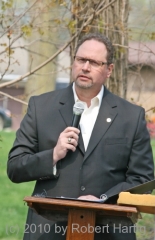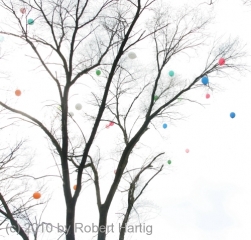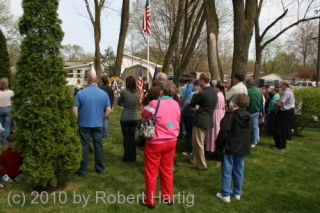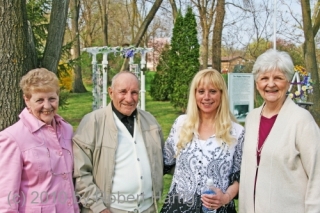Remember when tornado photos were all black-and-white, and you only saw them in the newspapers?
Remember how rare it was to see them?
Remember newspapers?
Remember watching The Wizard of Oz every time it played on TV, and never missing a showing, just so you could watch the tornado scene? (“It’s a twister! It’s a twister!”)
Remember how fascinated and delighted you were when they showed those grainy old movies of tornadoes in school, or sometimes on TV, and how you wished they’d replay them and then replay them again so you could watch them over and over and over?
Remember when you first saw that incredible photo of twin funnels south of Elkhart, Indiana, taken by photographer Paul Huffman during the 1965 Palm Sunday Outbreak? And that dramatic image of the Xenia, Ohio, tornado shot at just a quarter-mile away from Greene Memorial Hospital during the 1974 Super Outbreak?
Remember your first successful chase? (As if you could ever forget.)
I remember mine. It was in August 1996 across central Michigan, roughly along the M-21 corridor. North of Saint Johns, Michigan, I watched as a beautiful tube dropped from a classic supercell that was as sweetly structured as anything I’ve seen on the Plains. Both the tornado and its parent storm were gorgeous–and I was elated.
Remember when there were no laptops, no Android phones, no mobile data, no GR3–just your car, your weather radio, maybe a tiny portable TV, and a ton of hopefulness and excitement as you drove happily down the highway toward a sky full of rising towers?
Remember when seeing a tornado was rare and busting was something you simply expected and took in stride as part of paying your dues?
Remember before the movie Twister came out?
Remember before the Stormchasers series?
Remember when storm chasing wasn’t “extreme”?
Remember when storm chasing barely was at all?
Remember when Storm Track was a print newsletter published by pioneer chaser David Hoadley? I regret that I never subscribed, because I could have learned much from it.
Remember when the online version was a resource everyone welcomed and loved, not a point of contention among some chasers? I’m so glad the worst of that scuffle is a few years behind us now.
Remember when there was no live stream to fuss with, no competing with a league of other chasers all getting similar footage of the same storm, and no rush to process your video and get it to the networks first? (Not that I would know about that last point personally. I’ve never gotten the hang of it and don’t particularly care.)
Remember when there was nothing to prove, no reputation to make or uphold, and no stripes to earn?
Remember when it was just about the storms, period?
Don’t you wish it still could be?
Why can’t it?
Remember how excited you were when you first got hooked up with a laptop, GR3, and mobile data?
Remember how, before then, you used to stop at airports and small-town libraries just to get a glimpse of the radar?
Remember when there was no TwisterData, no HRRR, no SPC mesoanalysis graphics, no easy way to obtain forecast soundings, no abundance of forecasting resources available at just the click of a mouse button?
Remember when you weren’t even aware that there were forecasting resources available to you?
Remember your first exposure to the SPC forecast discussions, reading through all that arcane gobbledegook and thinking, “These people speak Martian”?
And then thinking, “Maybe if I just head for the center of where it says ‘Moderate Risk’ . . .”?
Remember discovering COD and looking over their forecast maps and not having a clue what they meant or how to use them? You pulled up the 500 mb heights/wind map and admired the pretty colors and thought, “This looks like it could mean something.”
Remember not knowing the difference between GFS and ETA and RUC?
Remember ETA and RUC?
Remember knowing absolutely nothing about forecasting, and how you struggled to learn, and how thrilled you felt when you finally pieced things together and successfully picked a target, or at least had your forecast verify?
Remember all that?
Never forget.
Many of you are too young to have experienced some of the things I’ve mentioned. You missed out on something good. It doesn’t all sound good, I’ll grant you–no in-car radar, no access to a bazillion free online weather resources–but it had its virtues. Not that I’d care to go back to caveman days, but I’d love to reclaim their spirit.
The beat goes on, and those of you who boarded the bus farther down the road are building your own list of remember-whens. But we who are in our mid-forties and older can recall simpler times. They were far less technically advanced, but they were also infinitely less frantic and driven overall. I guess you have to reach at least fifty years of age before you get to say stuff like that. It’s the province and privilege of duffers. I qualify, and I’m okay with that.
I wish I could claim something akin to the number and quality of tornadic encounters, and the knowledge gained thereby, and the photos to show and the stories to tell, possessed by some of the luminaries who are my age or not all that terribly much older. Those guys have got a lot to remember! But what’s mine is mine, and it’s enough to reminisce upon. If you got your start when storm chasing was of a different character than it is today, you know that you were privileged to come up in a special time, a time that can never be reclaimed. And memories of those days are well worth treasuring and reflecting on and feeling grateful for the experiences that created them.





